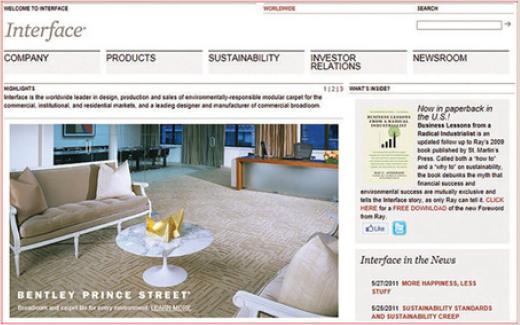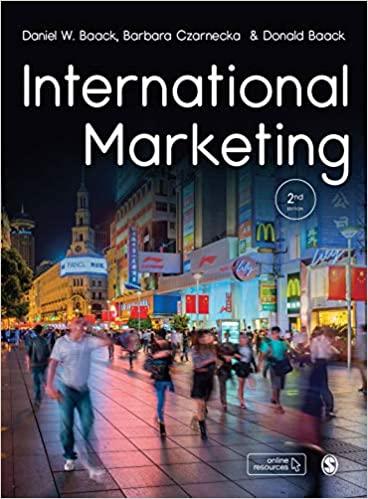When the inaugural Sustainability Survey was released by Globescan and SustainAbility, one relatively unknown corporation made the
Question:
When the inaugural Sustainability Survey was released by Globescan and SustainAbility, one relatively unknown corporation made the top of the list.
Ahead of corporate giants such as General Electric, Toyota, and Wal-Mart was Interface, Inc., a global corporation that markets modular carpet under the FLOR brand. The corporation’s website states that the company is “the worldwide leader in design, production and sales of environmentally responsible modular carpet for the commercial, institutional, and residential markets, and a leading designer and manufacturer of commercial broadloom.”32 Interface conducts operations in numerous countries, including InterfaceFLOR in Europe, InterfaceFLOR in Asia-Pacific, and InterfaceFLOR in the Americas, based in Atlanta, Georgia. In Europe, InterfaceFLOR maintains manufacturing facilities in Craigavon, Northern Ireland; Halifax,
West Yorkshire; and Scherpenzeel, the Netherlands. The company runs sales offices in many European cities. InterfaceFLOR Asia operates in China, Hong Kong, Japan, Malaysia, and Singapore.
To be placed at the top of this list of sustainability-focused companies is no easy feat. Interface clearly met the requirements. The survey was distributed to a panel of sustainability experts throughout industry, government, and nongovernmental agencies. It assessed credible commitments to sustainability grounded in the mission of the company.33 What is essential to the success of such a “sustainability through innovation”
strategy is the connection of the company with its mission and its products.
Managers monitor product development programs to ensure that sustainability goals are met. For modular carpet products to remain competitive, the flooring must meet durability standards, must have stain resistance levels present in competitor products, and also must be attractive and marketable to consumers and businesses.
Production processes play an important role. Company leaders examine the entire marketing channel from suppliers of raw materials to final product installation. Methods of delivery of carpet, installation protocols, and inventory control are part of the program. Managers assess the supply chain as well as disposal of the company’s core products. Used flooring and carpet to be discarded should be made to be recyclable or at least not damaging to the environment. Interface is a major manufacturer of a sustainable product: flooring.
Sustainability processes must be continuous. A company cannot simply rest on its laurels. Rather, it requires an ongoing commitment. Interface understands and continues to implement this concept. The commitment dates back many years. Founder and chair Ray Anderson devoted Interface to an effort entitled Mission Zero, which was essentially a mission to only take from the Earth what could be replenished by the Earth. The pledge was powerful, essentially promising that the company would be the first name in industrial ecology worldwide. The results of the effort have been outstanding:
the company has decreased greenhouse emissions by more than 80% and lowered the use of fossil fuels by 60%. The Mission Zero initiative carries a promise that the company will eliminate any negative impact it has on the
Questions
1. What product category best matches carpeting, convenience good, shopping product, or specialty product? Does the company’s sustainability program influence your answer? If so, how? If not, why not?
2. Explain how the core product, the packaging, and the auxiliary dimensions of carpeting produced in a sustainable fashion might create a marketing advantage for Interface.
3. Where is carpeting in the product life cycle? Using product cycle theory, where would sustainable modular carpet products fit? (You may visit http://www.interfaceglobal.com to help prepare an answer.)
4. What product support services would be crucial for Interface?
5. Should the marketing team at Interface seek to build and enhance brand awareness? If so, how? If not, why not?
6. How could Interface’s sustainability program generate brand loyalty or brand equity, especially when the brand is less well known than other carpset manufacturers?
Step by Step Answer:

International Marketing
ISBN: 9781506389219
2nd Edition
Authors: Daniel W. Baack, Barbara Czarnecka, Donald E. Baack





